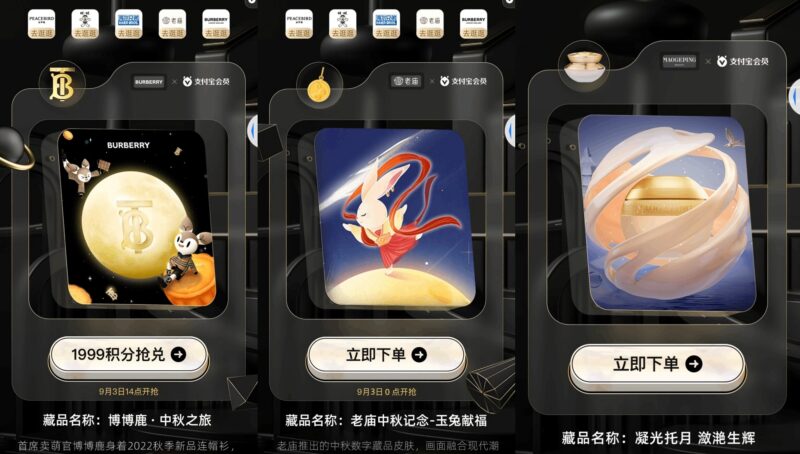With China’s Gen Z demographic on track to hit 300 million, the consumer market landscape in the world’s second-largest economy has been undergoing a generational transformation. Unlike their predecessors, this tech-savvy generation has developed a unique relationship with digital provisions when it comes to consumption.
As a result, social media, especially video-sharing platforms like Douyin (Chinese TikTok), and Xiaohongshu (China’s largest lifestyle-sharing community) have grown into a place that serves not only as an entertainment hotspot but also a birthplace for some of China’s latest social trends and youth cultures.
Given that understanding the target consumer cohort is at the forefront of market players’ minds in order to pull off momentum in China, Dao Insights presents the top 9 personas amongst China’s Gen Z that business marketers will want to keep their eyes on.
1) 8 AM players
As 8 o’clock is the typical time when students and working-class people in China kick off their days, “Zao Ba” (8 o’clock in the morning) has emerged as an Internet slang to refer to people struggling to get up in the morning and get personal preparation done within a short period of time.
Despite being short of time, this “delicate” age group shows no signs of compromising their overall appearance. Therefore, many have turned to social media for inspiration for anything from “Zao Ba makeup (8 AM makeup)” to “Zao Ba Hairstyle (8 AM Hairstyle)”. The hashtag “Zao Ba makeup” drew in more than 5.6 million views on the fashion vanguard platform Xiaohongshu and Douyin saw an increase of almost 11,000% on the relevant topic in 2022.
Douyin saw a 540.8% surge in “Knowledge Sharing” posts in 2022.
2) Casual learners
Not all Gen Z’ers comes to social media to wind down. Over half of the surveyed participants (a total of 6,171) reported Douyin as having become a chilled “classroom” for them to learn subjects either related to their hobbies or life skills. Demand amongst the shrewd demographic for consuming educational content also saw rapid growth in 2022.
While the short video platform Douyin saw a 540.8% surge in “Knowledge Sharing” posts, searches for this type of content increased by 1336.4% in 2022. Users in the Tier-2 prefecture-level city Linyi in Shangdong province seemed to be the most eager to learn through social media, followed by fellows in Zhengzhou in East-central Henan province and those from Guangzhou.
3) Emotional organisers
While better off in terms of material needs, the Gen Z crowds are struggling most mentally and emotionally due to the heavy weight of work and family, with China’s notorious “996” overtime work culture and family commitment such as giving birth to a child and parenting taking part of the blame. Such status quo has propelled the buzzword “emo”, referring to a sudden “sinking feeling” or a subtle self-resentment for not achieving what’s expected, which has been widely used amongst the young generation.
Home organisation, sorting and decluttering short videos gained the highest traction.
Most of these “emo” sufferers have taken to short video platforms for remedies, with home organisation, sorting and decluttering short videos gaining the highest traction. It is reported that counter-emo-related short videos, such as “Say No to Emo” and “Goodbye Emo”, drew in a total of 970 million views between the period of January and November 2022. Engagement of content with a combination of organisation and emotional control saw a more than two-fold increase during the same period of time.
4) Short clip masters
Content consumption in the digital age is fast-paced and the attention of young users is short-lived. This has resulted in “Get into the play in one minute and finish a play in three minutes” becoming common practice for Gen Z netizens consuming video content including movies and dramas, which is particularly true for male users.
This occurrence has pushed traditional video makers to readapt their production and trim down their output into bitesize pieces in a bid to keep their audience engaged throughout, bringing out the “short play” sensation. The country saw an overall growth of 53.2% in newly published, refashioned video content over the past year. The metropolis of Guangzhou took the first spot with the largest number of “short play” video users, followed by the Southwestern counterparts Chengdu and Chongqing.
5) Random new drop collectors
As short video platforms are a crucial space for “seeding” (a peer-to-peer recommendation process known as Zhongcao in Chinese) new products, they are also a hub for those savvy Gen Z buyers who have a particular interest in brand-new goods and services.
These random collectors are more likely to be prompted to make purchases by the video content.
Those consumers are more likely to be prompted to make purchases by the video content with females believed to be at the core, accounting for 64% of these random new product collectors, compared to 36% in male consumers. This content saw a significant increase in online engagement, with comments and shares regarding “New Products” recording an over 10-fold increase during the surveyed period.
6) Calorie burners
Since the Taiwanese singer Liu Genghong made an online splash by introducing home exercise live streams in early 2022, the national digital sensation towards workouts never wavered. Such enthusiasm has only been fuelled by the arrival of the FIFA World Cup later that year, which Douyin won the broadcasting rights for.
Liu’s invention “kicking shuttlecock” (home aerobic workout routine inspired by the traditional Chinese folk game) continues the momentum, garnering a whopping 12.89 billion views over the past year. As a result, this platform has become an online gym where workout enthusiasts share their daily training routines and are a go-to for beginners, following live tutorials on the tips and tricks of home exercising.
7) Tent dwellers
Glamping continues to grow a foothold in China as young people seek to destress themselves from work and social pressure, while nature has become the best mental shelter. The camping sensation has given rise to niche outdoor sports including frisbee, surf skating and hiking.
The new Tier-1 city of Chengdu, famous for its food and laid-back lifestyle topped the rank as the most popular place for campers. The Southeastern city of Shenzhen came second, followed by its neighbouring city Guangzhou. While the prefecture-level port city situated on the north bank of the Jin River in Fujian province held 4th place and Qiannan, an autonomous prefecture of Guizhou province edged into the top 5 too.
Chengdu, famous for its food and laid-back lifestyle, topped the rank as the most popular place for campers.
8) Workplace PUA fighters
While PUA (or pick-up artist), refers to the situation when a superior conducts manipulating behaviour towards junior employees has been commonplace for most Millennial office workers, China’s post-00s are resigning from this status quo. Not only are they more open about sharing their own experience but are also more outspoken on this issue, being bold enough to challenge their seniors compared to previous generations.
With this younger demographic determined to push back, it stirred heated discussions around anti-workplace PUA on Chinese social media, with videos under the relevant topic attracting over 1.16 billion views on Douyin. While women and men shared equally strong feelings about changing the work culture, dwellers in Guangzhou seemed to be the most active on this cause, followed by the capital Beijing. Chengdu and Chongqing ranked 3rd and 4th respectively, while the financial hub of Shanghai placed 5th.
9) Working retirees
The term working retirees refer to young workers living in the dilemma between “tangping” (or “lying flat” which means taking a break from relentless work) and “neijuan” (or inward curling, a social concept broadly used to express a feeling of burn out due to fierce competition). It is also described as a “45-degree career attitude” amongst those workers, which indicates one could neither fully lie flat nor curl inward. Having just entered the workplace, they have already shown a great interest in topics including “retirement” and “retired life”.
Chinese Gen Z shows a great interest in topics including “retirement” and “retired life”.
The phenomenon is particularly observed in China’s new Tier-1, Tier-2 and Tier 3 cities, accounting for over 60% of the total search conduced by young netizens. Content under the hashtags such as “Early retired young people” and “Get retired early” recorded a more than 80 and 100-fold increase on the viral short video platform in the past year.
The list is based on the latest report jointly published by CBNData (China Business Network Data, the biggest business analytical platform in China with data drawn from the tech giant Alibaba) and Ocean Engine (a consumer trends analysis website, which is based on consumer scenarios from Douyin, Xigua Video – another video-sharing platform owned by ByteDance, and Toutiao a news information product under ByteDance). Sample demographics were aged between 18 and 23 years old with survey periods conducted between January and November 2021 and the same period in 2022.









